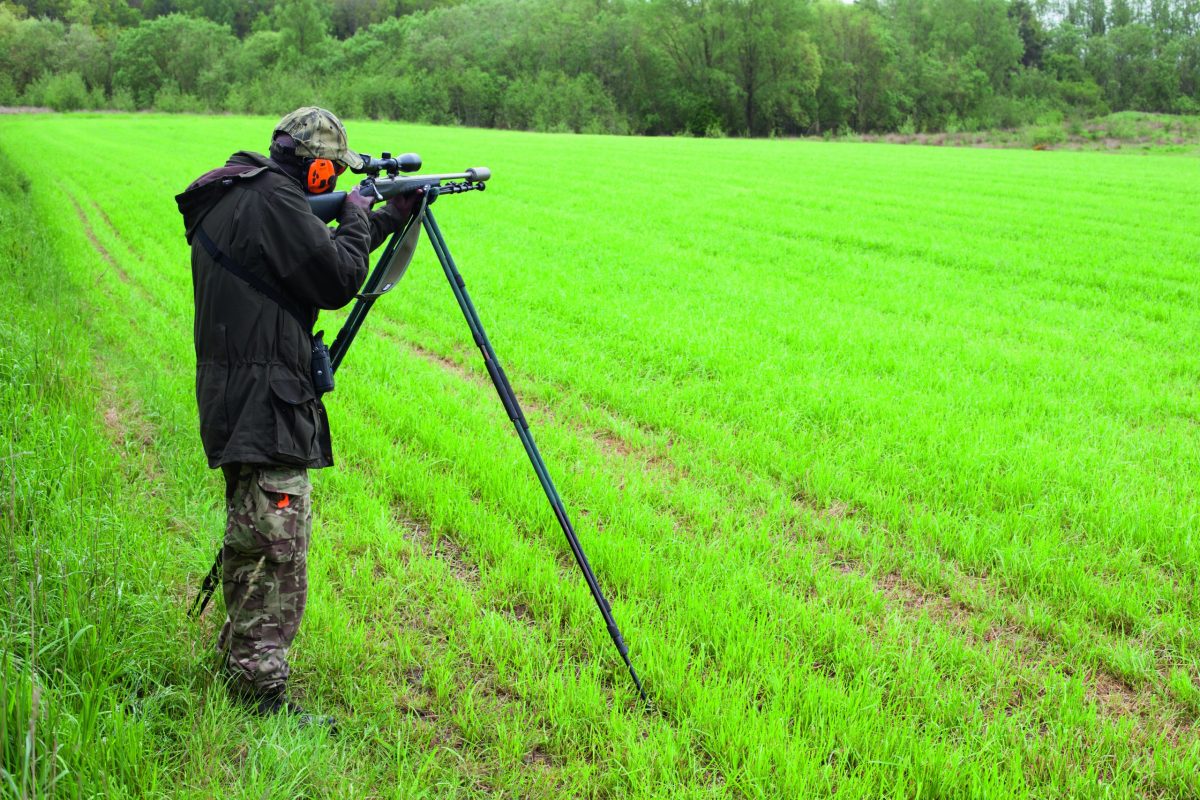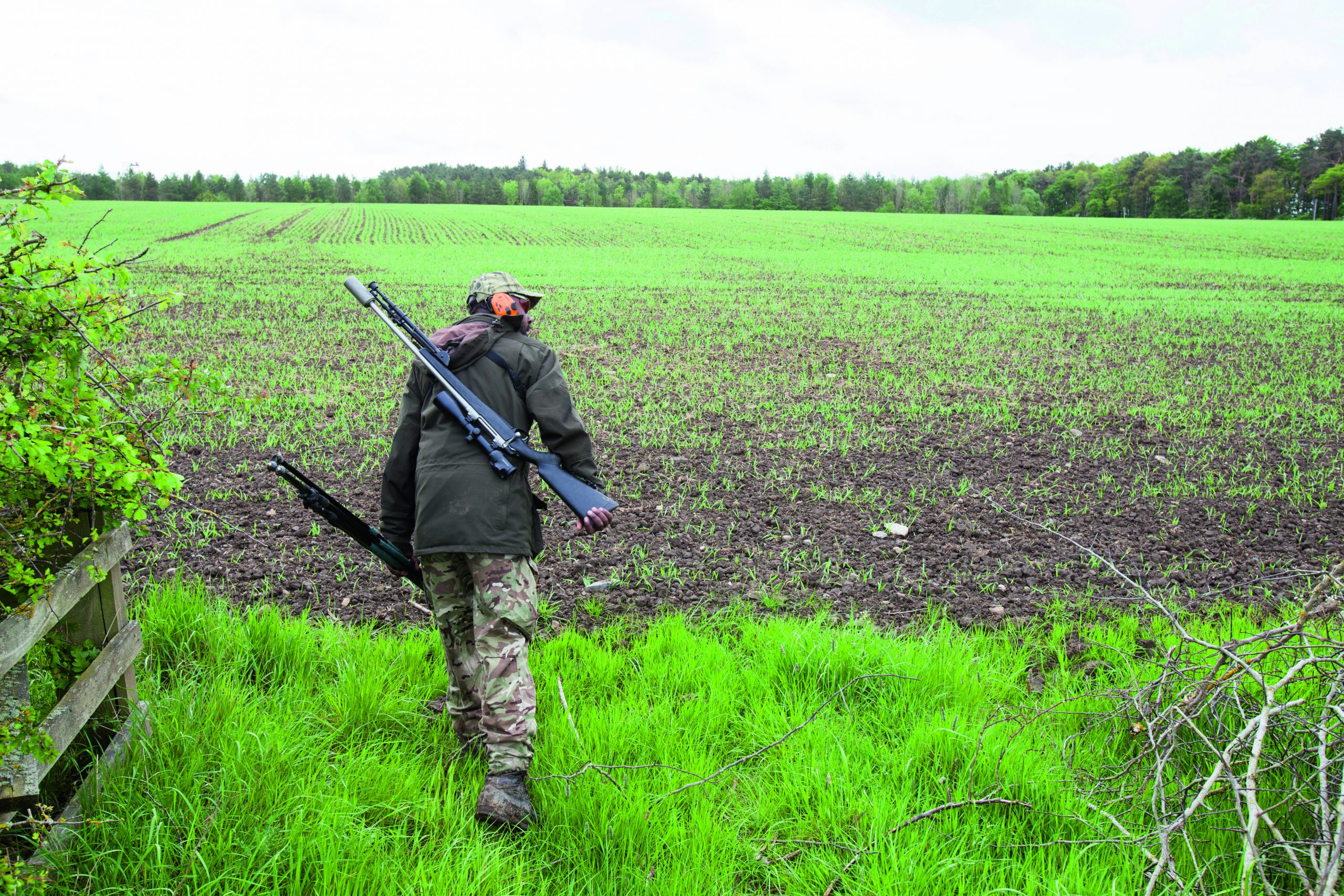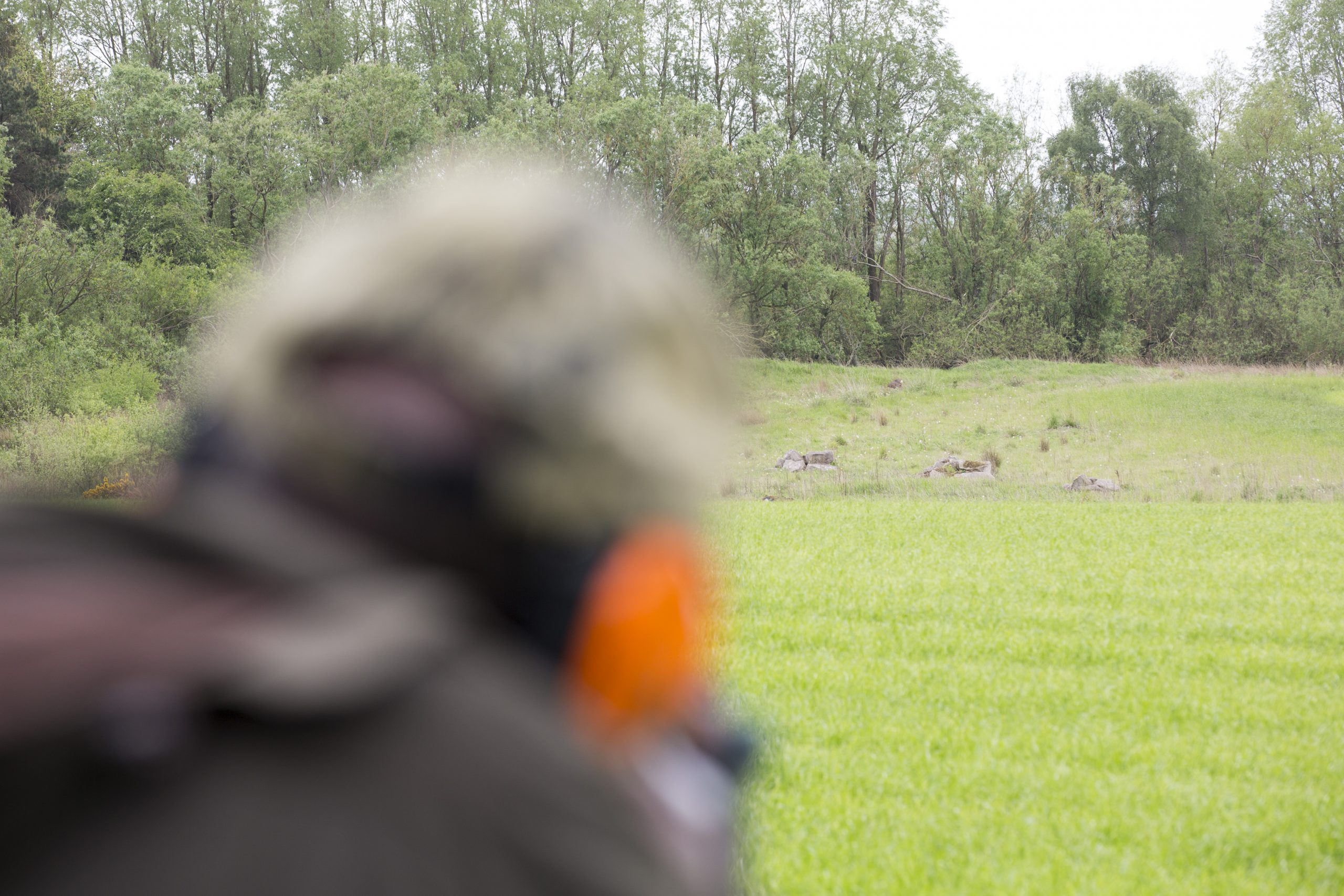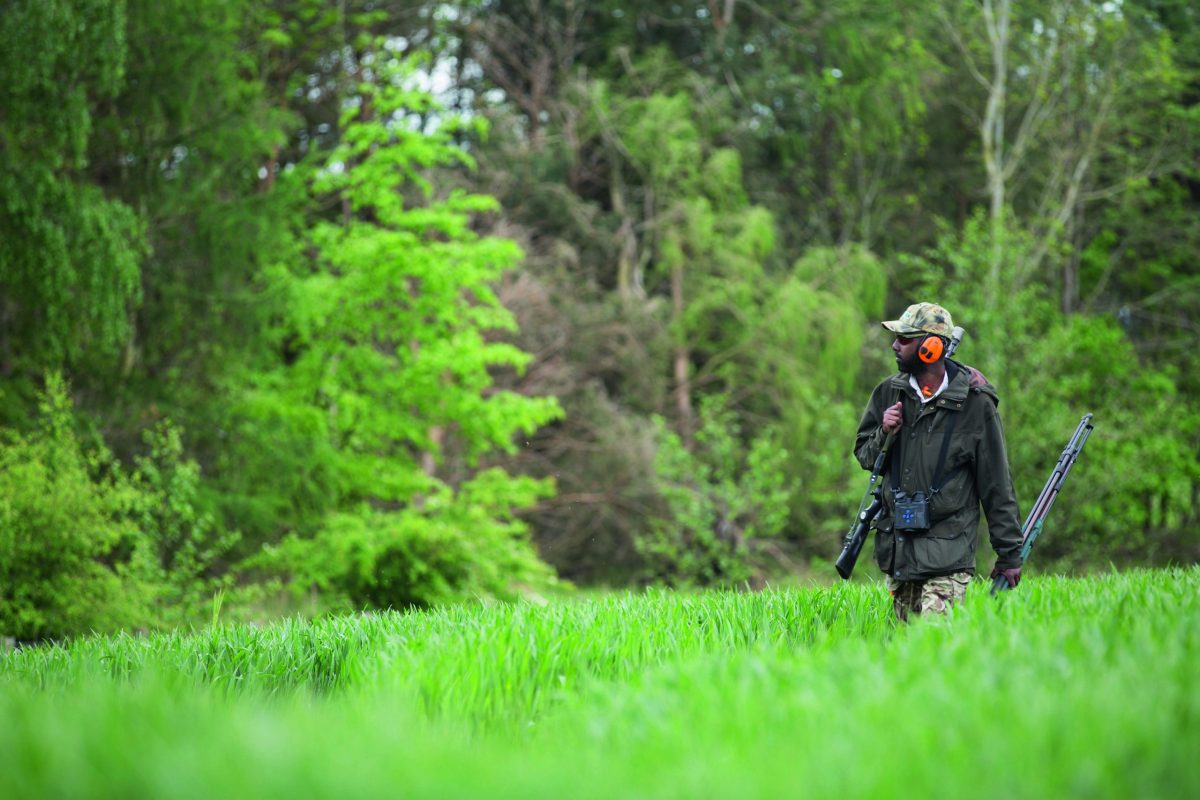Summer roebuck stalking can provide tricky, as early summer cover and the aftermath of winter storms hinder Al Gabriel’s culling plans
A super blood moon had graced the heavens the night before. With so much cosmological excitement and an early sunrise, I decided to aim for mid-morning. It was an unusually warm and muggy day. There is no mistaking it, it’s buck season. Where I was heading to, the cows are back on the fields and I’m under strict instructions from the farmer to avoid about half the farm for at least two weeks, to allow young cattle to settle.
Working around external and internal boundaries is less than ideal. Carcass recovery, in particular, can be difficult, but farmer’s orders must stand. This year, I am prioritising lowland estates first, while upland forestry work is in full swing.
I started my stalk on a barley field very close to a main road on the periphery of the estate. Only a few days previously, I had managed to take a young buck with a friend of mine and during the stalk, I’d spotted a buck that fitted the cull plan. I very much hoped to see it again.

Al spots a young roe but after a few minutes of grazing it emerges to reveal itself as a doe
I had recently changed the seating depth of my copper bullets and the increased pressure and velocity had tightened my groups. The 130-gr Fox copper rounds looked great on paper, but I was keen to see their performance on the real thing. As I approached the ground, I had failed to inform the photographer that the area was the most popular dogging site in Northumberland, and as we started walking towards the trees, we ran into two men emerging from the woods. The photographer, who had been rather pleased with the weather, said to one of the men: “It’s a good day for it, isn’t it?” The look on the other man’s face was priceless. I couldn’t have asked for a better start to any stalk.
A few minutes further on up the track, I could see slots and deer droppings, but crop cover was high and visibility was going to be an issue. This is where a thermal scanner comes in handy: my trusty Pulsar Accolade 2 unit never fails me. I no longer use binoculars in any woodland situations. (If you are in a situation that warrants the use of binoculars, check out our list of the best binoculars for hunting here).
The temperature was getting high — I may have overdressed. Usually, this is the time of year when I switch from my thick Deerhunter jacket to my lighter army surplus. The heat was starting to get to me. (Looking for a lightweight jacket for hunting? Read our top picks here).
In full swing
I could see pheasants and geese taking full advantage of what spring has to offer. Life was in full swing. In early season, I am always very keen to get a handle on yearlings and old bucks whenever possible. I set up my sticks in two separate locations with good visibility but, to my surprise, there was no movement. An hour into the stalk, there was no wind to speak of, which never helps while trampling through vegetation. Noise reduction is key and still days are challenging.
I decided perhaps it was time to move inside the woods. I was certain that they would be hidden inside, away from the unbearable heat. I removed my unused bullets from the Sako A7 and headed to my car, hoping that there would be no more dogging encounters.

There is no sign of the buck that Al identified as fitting the cull plan
At this time of year, every stalker should be paying attention to ticks. Rising temperatures and grass cover make this a dangerous time. Over the past few years, I have tried several kits and products to keep ticks at bay. On average, I get one tick on me a year but I want that number to be zero. (Read our list of the best tick removers here, or our picks for best anti-itch creams here).
I was at the Northern Shooting Show recently and spotted a new product called Hedgewitch, marketed by Best Fox Call. It contains a compound called icaridin that I have been told is superior and non-toxic, unlike other products. I am very hopeful that this may be the answer to my prayers. It is still early days, but so far, so good.
Approaching late May, roe deer territories are well and truly established. To be more specific, they have been re-established. Roebucks rarely form a new territory. In fact, they are rarely 200 yards away from their previous ground.
In many ways, roe deer represent a rare case in ungulates. Scientists have described the territorial behaviour as the ‘always stay’ approach. This is based on familiarised ground, which offers an advantage to the tenured buck, while keeping competition at bay for successive years.
In most cases, roe deer are only territorial within their immediate area and nowhere else. Numerous studies have shown that roe seem to hold longer tenure of a ground from a young age, depending not on the quality of the ground, but rather on its size. Even lost battles rarely result in a loss of territory from a roebuck, although these skirmishes are brutal and, in some cases, fatal.
We mustn’t forget that there is also female competition and mate selection at play, which adds a bit of spice to the mating game. For one of the most studied deer on earth, it is fascinating that little snippets of their behaviour are still being documented.

Roe does graze in the open and Al’s search for a buck goes on
Ruminating
I moved off a mile away to one of my favourite patches of wood. I parked up and it only took a few steps before I spotted roe at 250 yards at the woodland edge. At this range, it is very hard to identify gender, so I decided to step closer, following a hedgerow towards the animal.
I set up my shooting sticks and started monitoring with my rifle. I could see it was a young roe, but it was difficult to confirm gender as it was grazing through the field. After a few minutes, I finally got sight of its head and its anal tush: it was a doe. The young doe was the only animal we’d observed after about two hours of being on the ground.
Not far away, I spotted a heat signature using my thermal. Given the thick cover, it was hard to identify what the creature was. Luckily, it raised its head. It was a pink-footed goose. So much for the excitement. (Read our list for the best thermal imagers here).

The vegetation and the heat are rising, making stalking all the more challenging
In late May, with ample food around, roe will be browsing on trees and often retreat to tree cover in the heat. I have always enjoyed stalking woodlands mid-morning. I really enjoy sneaking into a wood where roe are couched in for the day, ruminating away.
I was hopeful that I would be able to find a buck or two in the woods, but the ground inside looked oddly different from how I remembered it. The storms of last winter had really caused major damage. Some 40% of the trees were now horizontal on the ground, ancestral deer paths were no more. I used to be able to read deer movements in this wood, but with so much carnage inside, it would take time to learn the new paths.
Hard hats
As some of the trees were still suspended, there was also a safety element. I think a hard hat is a must — nobody enjoys stalking when one wrong move could be your last. Luckily, the two high seats that I put up a few years ago are still intact, although visibility has significantly diminished. I will need to reposition the seats for the rut.
I resorted to my thermal scanner, but there was no movement. The only advantage had been the heavy rain the night before. Although it had raised the humidity, the ground was softer to walk on. Dried leaves, which normally act as an early warning system, had turned silent. The familiar bedding sites had all but disappeared and old oak and ash trees now lay in their place.
Unfortunately, this time, my efforts did not pay off, but a blank was due, given that I have had success on my last six outings. It is an exciting time of year, though high vegetation, heat and length of day will be challenging.
It is very important to stay on top of early-season culls before it becomes near impossible in June and July. It is with these challenges that deerstalking becomes a mental game in early summer. The 18 hours of daylight is not for the faint-hearted




